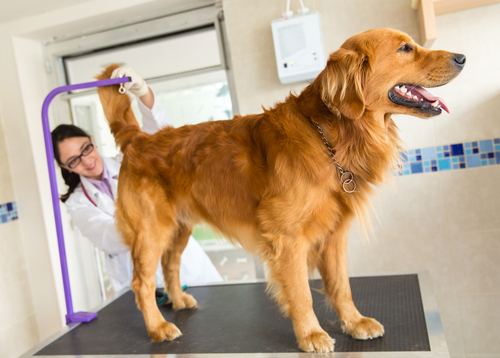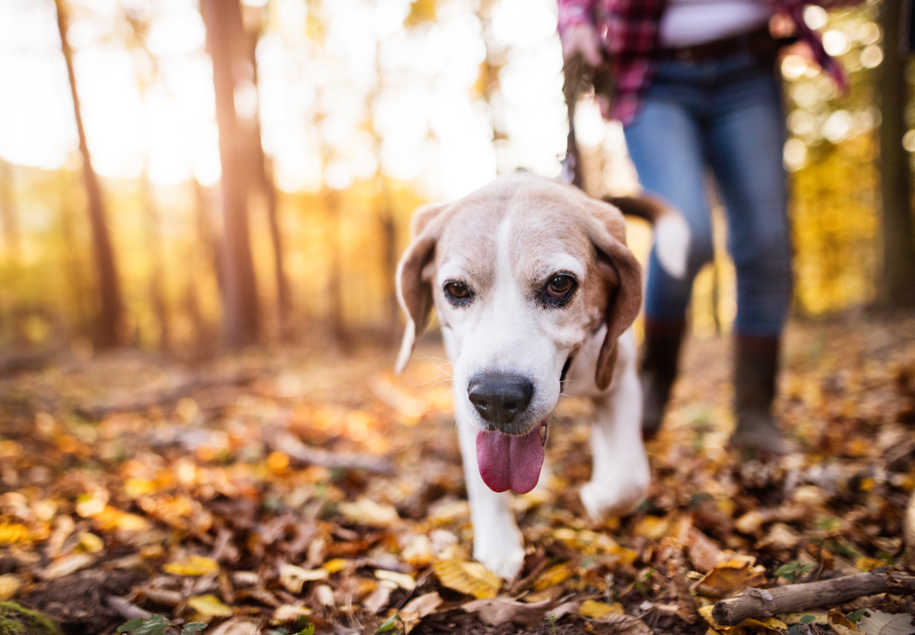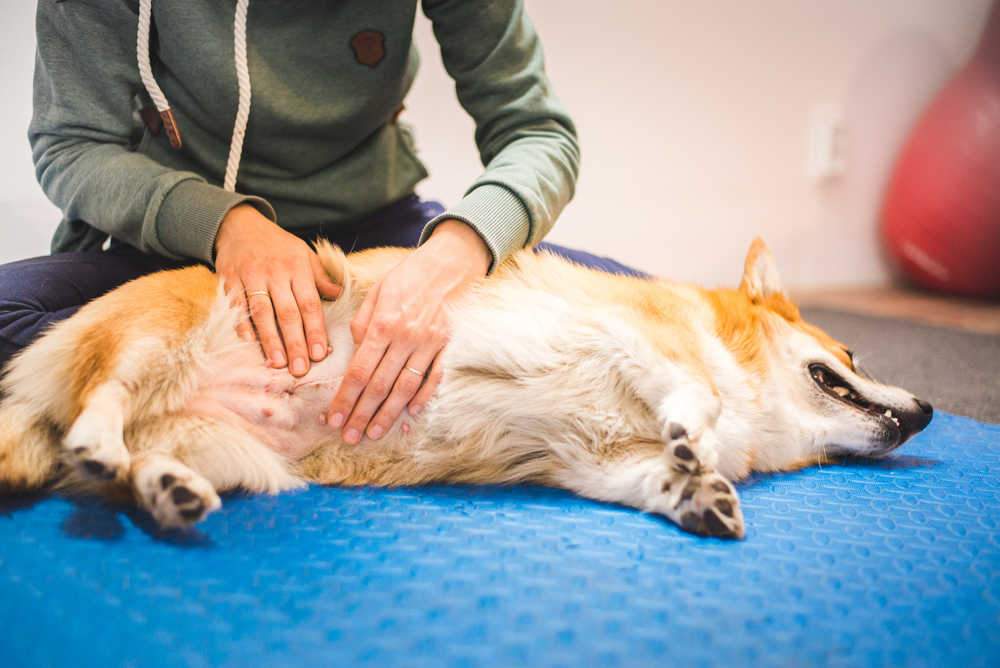
While induction of labor is a hot topic in humans, it is really not something much discussed when it comes to canine breeding. The reason? It is quite unusual for a dog to go overdue and, when they do, it is not usually for long, with the majority of canine labors starting close to the expected date.
Owners should only consider trying to induce labor at home when they’re confident their bitch is over-term and after discussing things with their vet. Some methods would not be suitable for every dog, and we could do more harm than good if we attempt to induce labor before the bitch is ready.
Induction of labor in dogs
It’s important to recognise if a bitch is struggling to labor, experiencing complications of if they are unlikely to give birth naturally. Attempting to induce labor at home in these cases could be catastrophic for mum and the litter.
A bitch who has needed a previous c-section or who is a breed such as the Boston Terrier or Bulldog, is not going to be a good candidate for labor induction from home. However, for a healthy bitch who is expected to labor without problem but who is taking their time, there may be some things worth trying from home.
A brief overview
Inducing labor is usually not needed and the vast majority of expectant doggy moms will labor in due course, without any sort of intervention. Trying to bring on labor before the bitch is ready can lead to pre-term puppies who are poorly and complications during the labor itself.
When your bitch is overdue, you may consider consulting with your vet about things that can be done from home to start the labor process. In this article, we’ll have a look at some of the more traditional methods, that breeders and owners have been using for centuries.
How do I know it is time for my dog to give birth?
When it comes to the pregnancy (gestation) length in a female dog, it is fairly predictable. The majority will labor on day 63, though it is normal to go a few days early or late. Anything up to day 70 can be considered normal. We must also remember that it can be hard to predict which mating was successful and when the embryos will have implanted, making ‘due dates’ a little fuzzier.
Once close to labor, your bitch will start displaying signs that are easy to pick up on. These can include:
- A body temperature drop. Their body temperature can drop a whopping 1.5 degrees centigrade in the 12-24 hours before labor begins. So, it is sensible to regularly check your female’s temperature from about day 61 or so.

- Restlessness, panting and pacing. This sort of behavior is attributed to hormonal changes, but also to the uterine cramping your bitch is starting to experience. Some dogs even shiver and shake at this point.
- Nesting. As the female prepares for the arrival of her litter, you will notice she is doing things like dragging blankets around and mothering teddies and toys.
- Nausea and vomiting. Bitches may go off their food and drool. Not every female will vomit, but if this happens, it is quite a normal sign.
- Lactation. Even before pups arrive you may notice some liquid milk coming from your female’s nipples. You might see this unexpectedly, or you may detect it when checking the teats, by gently massaging them.
Should I help my dog and induce labor? When it is warranted?
Most of the time, no, you do not need to induce labor. Hormonal changes naturally happen within the body, preparing mum and puppies for labor at the right time. Trying to speed up this process can have negative consequences and may be stressful for you and your dog, as well as the puppies.
If you’re confident your bitch is overdue, you might consider some at-home techniques to kickstart her labor, once your vet has given you the green light to do this.
What are the best ways to induce labor?
The most effective way of inducing labor is at the vet, with injectable medicine such as Aglepristone (1), Oxytocin (2) or Misoprostol (3). Even so, it is rarely done. This is because the mechanisms behind the triggering of labor in the bitch are poorly understood, and inducing labor before the bitch is ready could lead to complications including respiratory distress in the puppies.
In my 11 years of clinical practice I have assisted in countless deliveries and performed many c-sections but have never once induced labor, nor am I aware of any of my colleagues doing so. This is how uncommon it is within the veterinary community!
FOUR Steps you can take to induce labor at home
Anecdotally, there are things that can be done from home which may bring on labor for your female. These include:
- Walking. Gentle exercise is a wonderful way of helping things along naturally, as it may encourage dilation of the cervix and helps pups move into favorable positions for delivery. While we can offer calm walks at a slow pace, we should never force the female to come along if she doesn’t want to.

- Keeping the environment calm, quiet and dark. We want to reduce stress and promote a relaxed space, ensuring the bitch produces lots of natural oxytocin, to help contractions strengthen. If the room is too bright or noisy, this can negatively affect the hormones needed for labor.

- Gentle massage. Very gently place your hands on mom’s abdomen, applying light pressure for short periods of time. We are not trying to ‘push’ on the uterus, more to help with relaxation. Not every female will tolerate this and we should only attempt it if she is happy for us to do so and seems to be enjoying it.

- Nipple stimulation. We can gently stimulate the nipples with a clean, warm wash cloth. This increases hormonal let down. It is also good to confirm that each mammary gland has milk, ready for the puppy.

A note on ‘feathering’
When researching for this article I came across some sites that mentioned a process called ‘feathering’ whereby owners insert gloved fingers into the vagina and ‘tickle’. This is certainly not something I’d advise an owner or breeder do, as it could introduce infection and may be very uncomfortable for the female.
Feathering may be performed by a vet professional once labor has started, particularly if they are assessing the presentation of a puppy that is already on its way.
Risks associated with induction of labor at home
Trying to interfere with nature carries risks. If we induce labor too early, we could end up with poorly, premature pups who are not well equipped to deal with the world due to under-developed lungs, immune systems and a lack of fur.
If a bitch is overdue or not laboring as expected, some owners delay seeking vet care, instead trying to help labor progress at home. This is potentially very dangerous and could risk the lives of mum and her puppies. If your bitch is showing signs of dystocia (difficult labor) such as a prolonged first stage of labor or contractions that are not progressing (4), trying to induce labor any further will be fruitless at this point.
When not to induce labor at home
We should never induce labor at home if there is any chance the puppies have not yet reached full term (63 days). It is also not something that should be done for higher risk mums, including breeds who generally need c-sections.
These techniques are also not useful for a bitch who is in active labor that is not progressing. These dogs need immediate vet care.
What should I do if my dog is still not giving birth?
If after trying to induce labor at home nothing is happening within 24 hours, it is time to check in with your vet. They may be happy for you to continue monitoring from home, or might suggest you bring your bitch in for a check-up. Uncommonly, they may discuss bringing your female in for induction.
- https://pubmed.ncbi.nlm.nih.gov/15823352/
- https://www.researchgate.net/publication/232746743_A_safe_fast_and_successful_induction_of_parturition_in_a_bitch_a_case_report
- https://www.vin.com/apputil/content/defaultadv1.aspx?id=7054826&pid=12886
- https://www.petmd.com/blogs/fullyvetted/2013/jan/dystocia-birth-problems-in-dogs-29692
Disclaimer: This website's content is not a substitute for veterinary care. Always consult with your veterinarian for healthcare decisions. Read More.


Be the first to comment